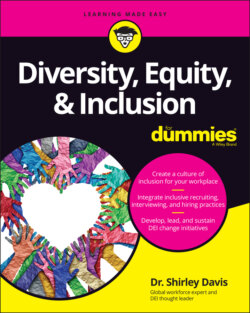Читать книгу Diversity, Equity & Inclusion For Dummies - Dr. Shirley Davis - Страница 26
Isms and phobias
ОглавлениеIn simplest terms, isms are forms of oppression and discrimination.
Following are some of the most common isms:
Ableism: Discrimination or prejudice against people with disabilities
Ageism: Prejudice or discrimination on the grounds of a person’s age
Classism: Prejudice against or in favor of people belonging to a particular social class
Heterosexism: Discrimination or prejudice against non-heterosexual people based on the belief that heterosexuality is the only normal and natural expression of sexuality
Racism: Prejudice, discrimination, or antagonism directed against a person or people on the basis of their membership in a particular racial or ethnic group, typically one that’s underrepresented or marginalized
Sexism: Prejudice, stereotyping, or discrimination, typically against women, on the basis of sex
A phobia is an unreasonable or excessive fear or hatred of something or someone. While there are many phobias, several are specific to diversity, equity, and inclusion. Examples include:
Homophobia: Dislike, fear, or hatred of or discomfort with people who are attracted to members of the same sex
Transphobia: Dislike or discrimination against trans people or gender nonconforming people because of their gender identity
Xenophobia: Dislike of people from other countries or anyone deemed “foreign” because of their immigrant or visitor status
Islamophobia: Dislike or hatred against anyone practicing or perceived to be a practitioner of Islam because of their religious affiliation
